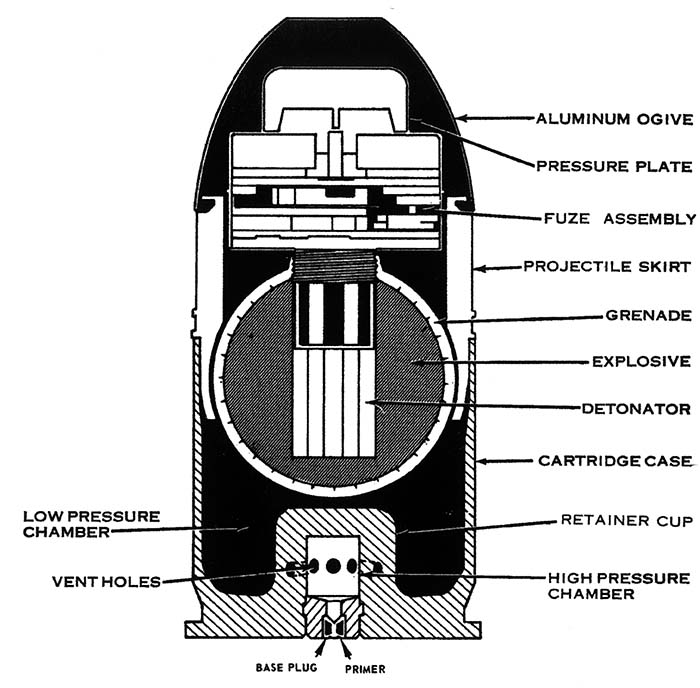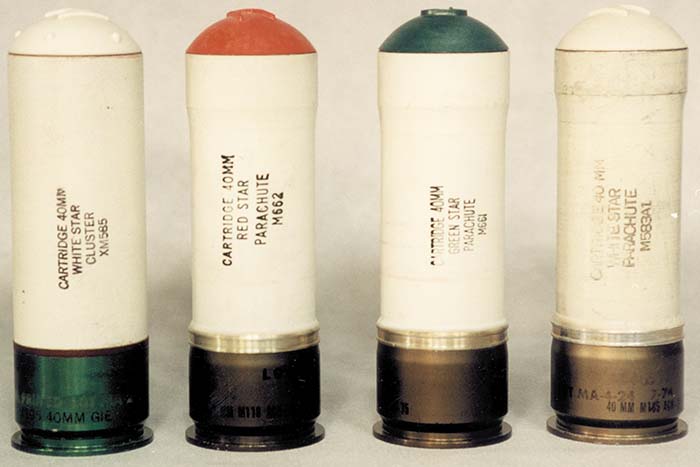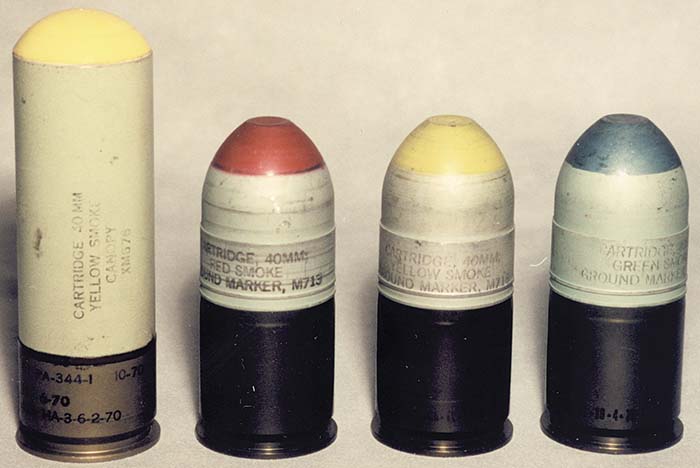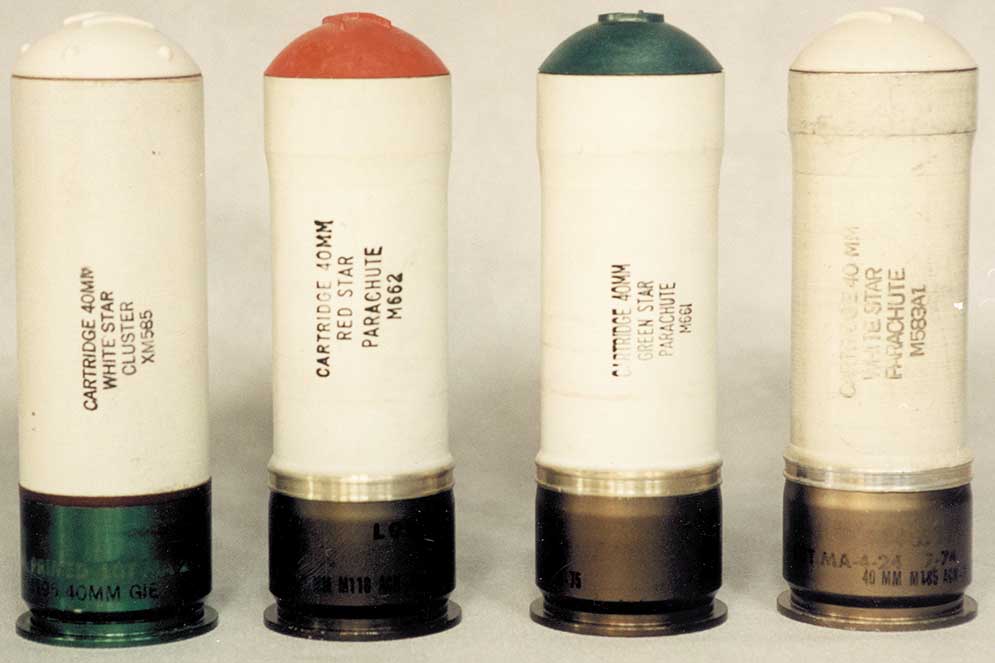By Steve Fleischman
40mm Grenade ammunition was developed after the Korean War along with the two delivery systems M79 and M203. This system was perfected by the early 1960’s and had a field expedient proving ground, South Vietnam.
All 40mm ammunition has two major components, the case and projectile. All 40x46mm rounds have a high-low propulsion system. When the primer ignites the propellant in the high-pressure chamber it creates about 35,000 pounds per square inch. This pressure ruptures the vent holes in the cup. The pressure then drops to 3000 pounds per square inch. This is sufficient to propel the projectile out of the barrel.
The projectile is fired out of the barrel at 250 feet per second. The rifling imparts a right hand spin on the projectile of 37,000 revolutions per minute. This spin combined with the setback arms the fuse.
The 2 fuses used on this system are the M552 and M551. They are both impact detonating fuses. Arming is delayed from the muzzle to 3+ meters for the M552 and 14-28 meters for the M551. This is accomplished through a clockwork escapement that is driven by centrifugal forces on the weights in the fuse. Types of 40mm Rounds in Vietnam Service The most common rounds used in combat were limited to Pyrotechnic, Smoke and High Explosive. Many developmental round found their way into service and carried an “XM” designation.

High Explosive
The most common HE rounds were the M406 and M433 . The 406 contained a spherical bomblet with a lethal radius of 5 meters. The 433 contains a shaped charge of RDX, with a lethal radius of 5 meters but a penetration capability of up to 2 inches of armor.
Pyrotechnic Rounds
Pyrotechnic rounds were used for signaling and illuminating.
The cluster type was made in white, green and red. It contained 5 stars that burst at 550 feet and burned for 7 to 11 seconds.
The parachute star type came in white, green, red, and orange. Its single candle ignited at 550 feet and burned for 40 seconds.

Smoke Rounds
These rounds were typically used for spotting targets, locations and conditions of landing zones.
Ground marker smoke was produced in red, green, yellow, and violet. These had a range out to 400 yards and ignited on impact with a burn time of 20 to 40 seconds depending on type.
Canopy smoke rounds were used when jungle cover would hide a normal ground burn. These were fired up through the trees to burst above them.

Gas and Shot
Two additional rounds that saw limited tactual use were the M651 CS gas and the XM576E1 shot (designated multiple projectile)
The CS gas had a range of 400 meters, and burn time of 25 seconds. It did not arm itself until it reached 10 to 30 meters.
The XM576E1 shot round contained 20 buckshot sizes pellets in a plastic sabot. Its maximum range was 50 yards and effective range of 35 yards.

| This article first appeared in Small Arms Review V5N7 (April 2002) |











